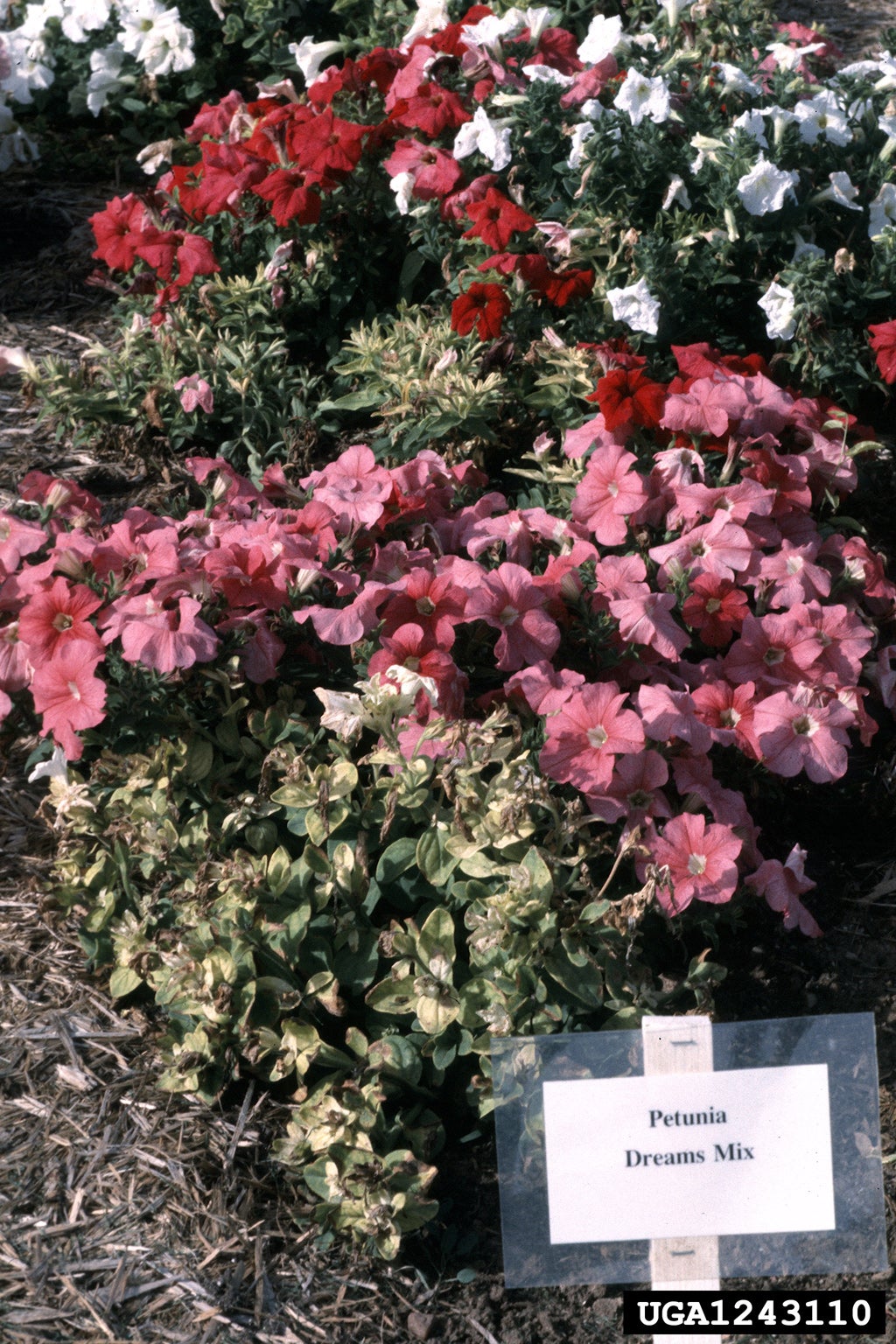Petunia Diseases And Pests: Common Problems With Growing Petunias


Whether spilling out of baskets and boxes or filling the fronts of beds with their bright flowers, petunias make every space a little more merry. These tough flowers tolerate a lot of abuse and neglect, though pests and diseases can create problems with growing petunias. Read carefully through the list of common petunia flower issues to learn how to treat petunias ailing from a variety of causes.
Pests of Petunias
There are a number of pests of petunias that can affect these plants. Here are the most common: Mites: Mites are nearly microscopic pests that suck the juices directly out of petunia cells. These cousins to the spider may cause leaves to curl, cup, or flowers to discolor and stiffen. Spider mites also leave thin webs behind where they feed. Spray your petunias with neem oil once a week until all signs of mites are gone. Caterpillars: Caterpillars chew through foliage and buds, sometimes causing extensive damage in no time. They're easy to see if you pick through thick foliage. The best solution is to remove them by hand and drown them in a bucket of water daily, but if you can't bring yourself to do it, sprays of Bacillus thuringiensis applied weekly should knock them out quickly. Thrips: Thrips can carry viruses to petunias and may cause leaves to turn papery or flowers to develop white spots, known as “color break.” They can be difficult to see, but look like very tiny, fat ants when running around on your plants. Neem oil or insecticidal soap will knock them out in a few thorough weekly sprays.
Petunia Diseases
Below are common diseases affecting petunia plants: Root, Stem, and Crown Rots: Root, stem, and crown rots commonly affect petunias planted in areas of poor drainage or that are chronically overwatered. Leaves wilt despite regular watering and stems may begin to soften. Correcting the drainage and watering less frequently is the only solution if an affected petunia can be saved at all. Often, it's easier to pull plants and start over early in the season. Botrytis Blight: Botrytis blight may cause spots or other discoloration on flowers and leaves that eventually sprout brown-grey spores. Again, this disease is favored by wet bedding conditions, so let up on the watering when it appears. Prune out any diseased sections of your plants and pick up fallen debris; drying out the bed should prevent re-infestation. Powdery Mildew: Powdery mildew doesn't need soaking wet conditions to thrive, but often appears where plants are spaced too tightly, obstructing airflow. Look for white, powdery spots of spores that spread or cover leaves and flowers completely. Powdery mildew can be treated with neem oil, but you should also correct the conditions allowing this disease to get a foothold. Verticillium Wilt: Verticillium wilt causes an overall decline in plant vigor, often causing older leaves to wilt before younger ones, or only part of a plant to die at first. There is no cure for verticillium wilt, so pull your plants and try again in pots. In some areas, the soil can be heated enough through soil solarization to kill the fungal pathogen. Viruses: Several viruses affect petunias, causing leaves to develop yellow spots, mosaics, halos, or bullseyes. Unfortunately, petunia viruses cannot be cured. If you suspect virus in your plants, use extra caution when pruning or working with the plants to slow the spread of disease. Many plant viruses are vectored by small insects, check your plants carefully and treat any you find if you hope to save the non-symptomatic plants in your beds.
Gardening tips, videos, info and more delivered right to your inbox!
Sign up for the Gardening Know How newsletter today and receive a free copy of our e-book "How to Grow Delicious Tomatoes".

Kristi Waterworth was a regular contributor to Gardening Know How for many years, answering countless queries on plant pests and diseases.
-
 Looking For Plants To Give You The Soft And Fuzzies? Try These 5 Fuzzy Leaf Plant Options
Looking For Plants To Give You The Soft And Fuzzies? Try These 5 Fuzzy Leaf Plant OptionsLovers of texture, drama, silver foliage and tactile plants will adore these special sensory garden additions. These fuzzy leaf plant options will leave you all aglow
By Susan Albert
-
 Get Ready For A Summer Of Hummers! Grow These Full Sun Hummingbird Plants and Flowers
Get Ready For A Summer Of Hummers! Grow These Full Sun Hummingbird Plants and FlowersIf you’re lucky enough to enjoy a sunny backyard, make sure you are maxing out on your pollinator opportunities and grow these full sun hummingbird plants and flowers
By Tonya Barnett